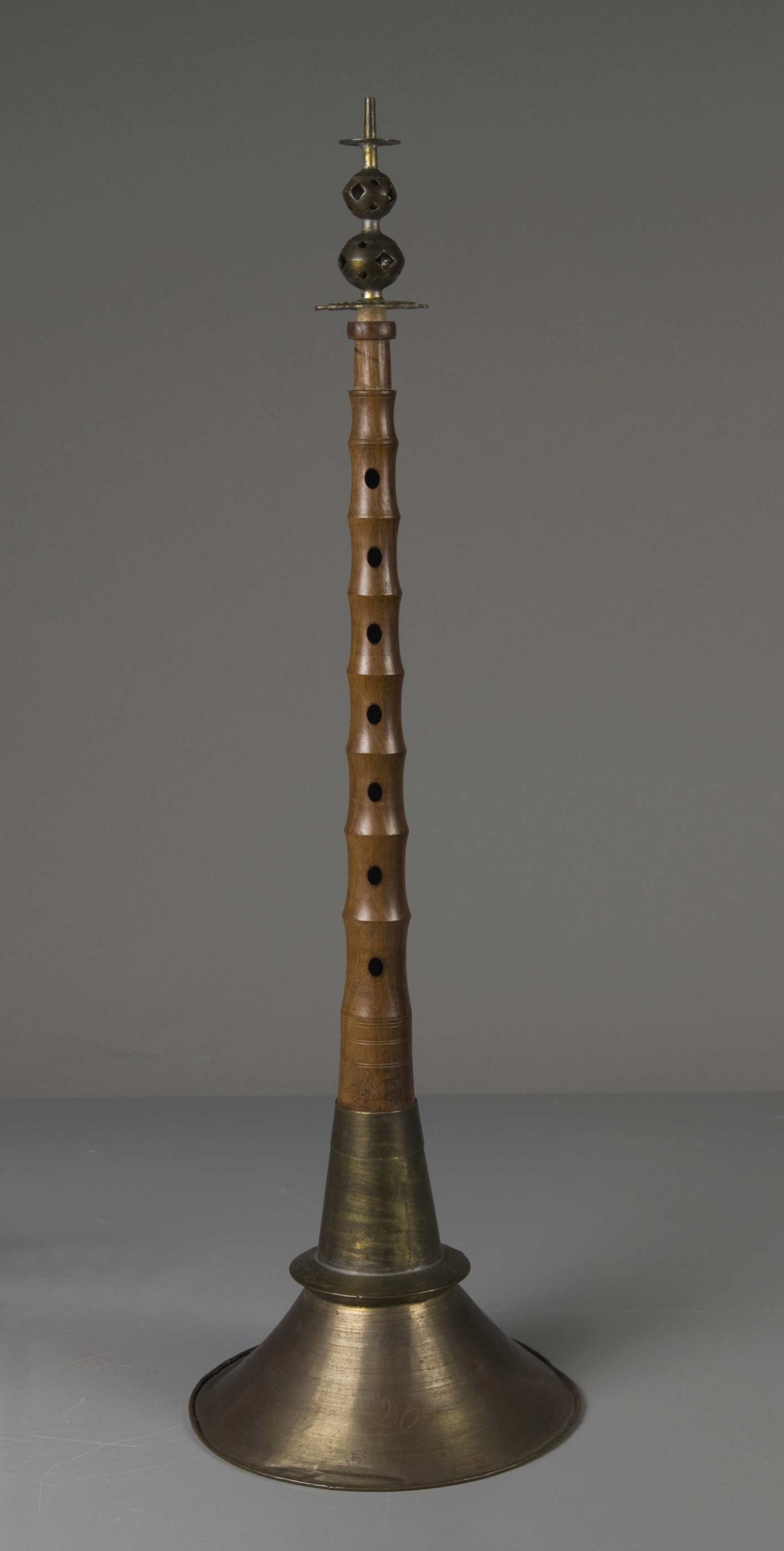Suona (嗩吶 )
Double-reed instruments first appeared during the late Han dynasty, having originated in the Middle East. The term suona derives from zurna, the Arabic name for the instrument. It is depicted, along with many other instruments, in images created from the third to the fifth century in the Buddhist cave temples at Kizil. The penetrating sound of the suona, ideal for processions and military functions, was easily appropriated for popular music. Several varieties are found in China, including a smaller version called a haidi. The player, whose mouth completely covers the small reeds, uses circular breathing (inhaling through the nose) to maintain a constant tone.
Due to rights restrictions, this image cannot be enlarged, viewed at full screen, or downloaded.
This artwork is meant to be viewed from right to left. Scroll left to view more.




